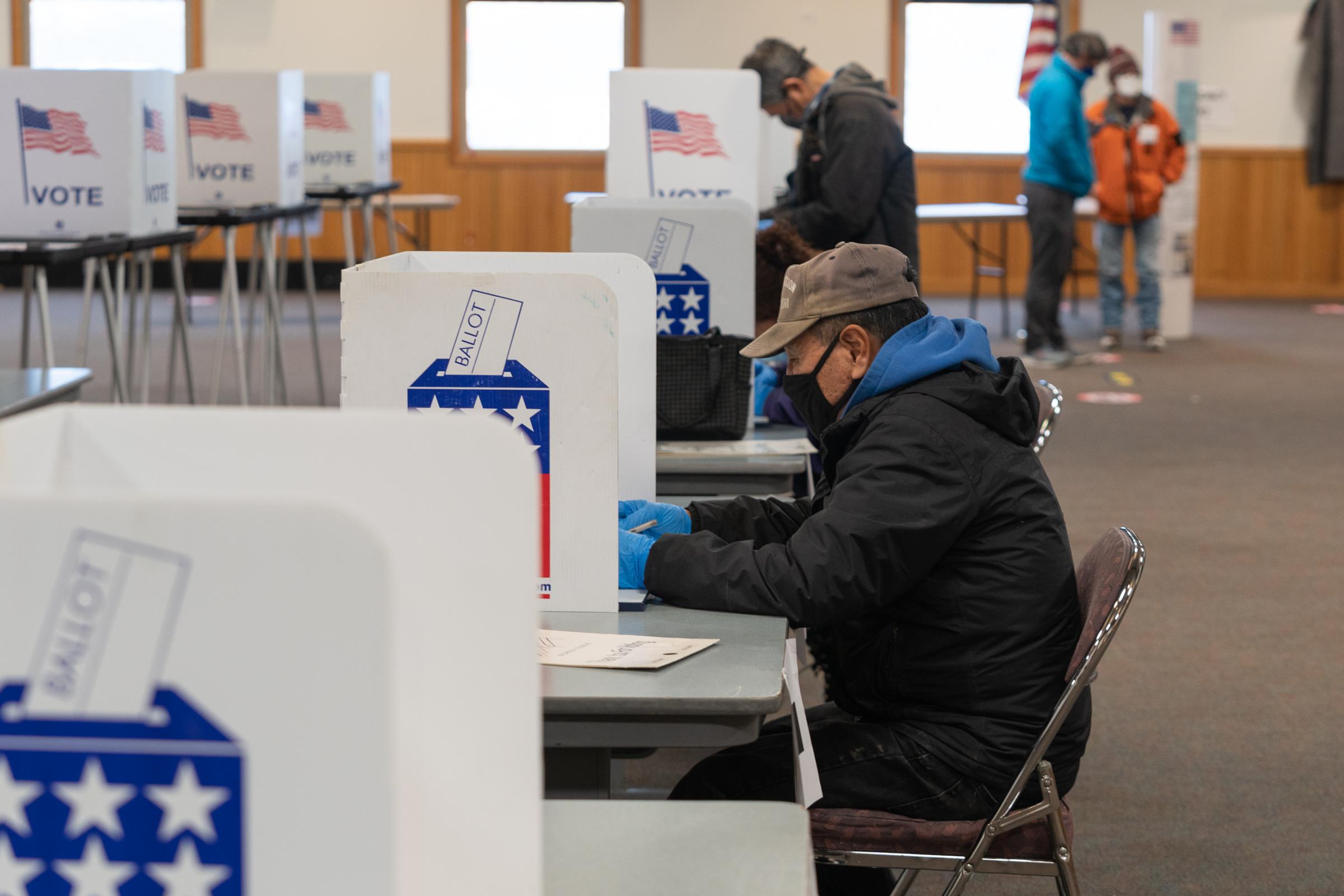Stay Cool, Alaska
Alaska is a state with a unique political character that favors moderate politics over partisanship.

The state of Alaska has a very unique political character compared to the rest of the country. When pundits predicted Alaska would vote Red in the special election two years ago, Mary Peltola ended up winning. When national elections take place in our state, the cities vote red while rural areas vote blue. While other red states took actions against abortion following the overturning of Roe vs. Wade, Alaska did not, and the vast majority of Alaskan adults are supportive of abortion rights. It's a state with gun-toting Democrats and weed-smoking Republicans. Alaska tends to elect more moderate and independent candidates and have lower levels of political polarization. Alaska is unique, and that's a good thing.
Alaska tends to elect more moderate and independent candidates in its local and state elections. This is no-doubt helped by the newly-instilled ranked-choice voting system, which favors moderate candidates, but this was a development that occurred even before the development of ranked-choice voting in 2020. For one, independent and third-party candidates tend to do better in less populous states to begin with, but Alaska also happens to have the highest percentage of independent voters in the Union, with 58% of voters being independent. This has led to high performance among Alaskan independents as well as high performance for more moderate politicians.
Senator Lisa Murkowski, for instance, is largely regarded as a moderate Republican, and she has seen challenges from more-conservative Republican candidates such as Joe Miller in 2010. Against all odds, Murkowski was able to secure a victory in a write-in campaign, the first candidate in any state to do so since 1954. Supporting her was a coalition of independents and moderate Republicans, and she narrowly secured a victory.
Ever since the passage of ranked-choice voting, Alaskan independents have increasingly begun to make their mark on Alaska's elections. The most notable example of the impact of ranked-choice voting was the election of Democrat Mary Peltola in 2022, who won out against Sarah Palin and Nick Begich, two Republicans. In that same year, six independents were elected to the Alaska state house. Since the reform, moderates are more likely to win elections within the state of Alaska in a more democratic process where independents are more capable of making their voices heard.
Another way that Alaska is unique is the state's lack of political polarization. This lack of political polarization is something that has--once again--been notable since even before ranked-choice voting. Compared to the lower-48, Alaska sees much less partisanship, and views tend to be more moderate in nature. This is no doubt a side-effect of the large percentage of voters identifying as independents in Alaska. Measures within the legislature tend to more often be bipartisan and the state has been spared from much of the "culture war" that has engulfed the lower-48. In a state where moderates are favored, it's very hard to be overly partisan. The representative election in 2022 proved that appealing to an extreme base, as Sarah Palin and Kelly Tshibaka did, was something that did not resonate with Alaskans. Ranked-choice voting only solidified Alaska's nonpartisanship.
Have you noticed a common thread here? All of these positive characteristics of Alaska have existed since before ranked-choice voting, yet ranked-choice voting has only emboldened them. It is clear that Alaska's unique political character, being one that prioritizes consensus and moderation over division and extremism, is one that must be protected. Ranked-choice voting and open primaries, despite their controversy, are a clear step towards solidifying these ideals. It is important that we do not succumb to the division that comes with the politics of the lower-48 and that we maintain what works best for Alaskans, not what works best for political parties.